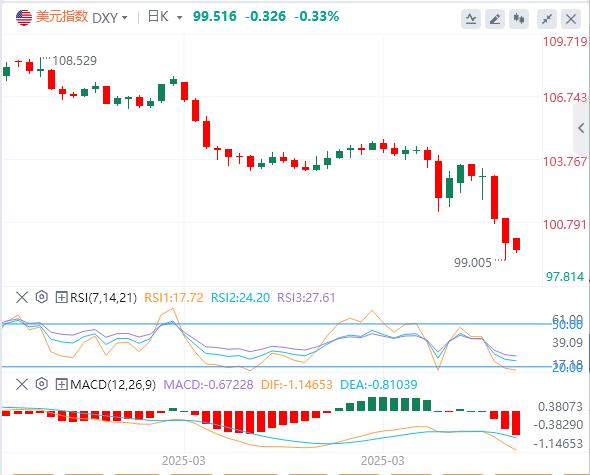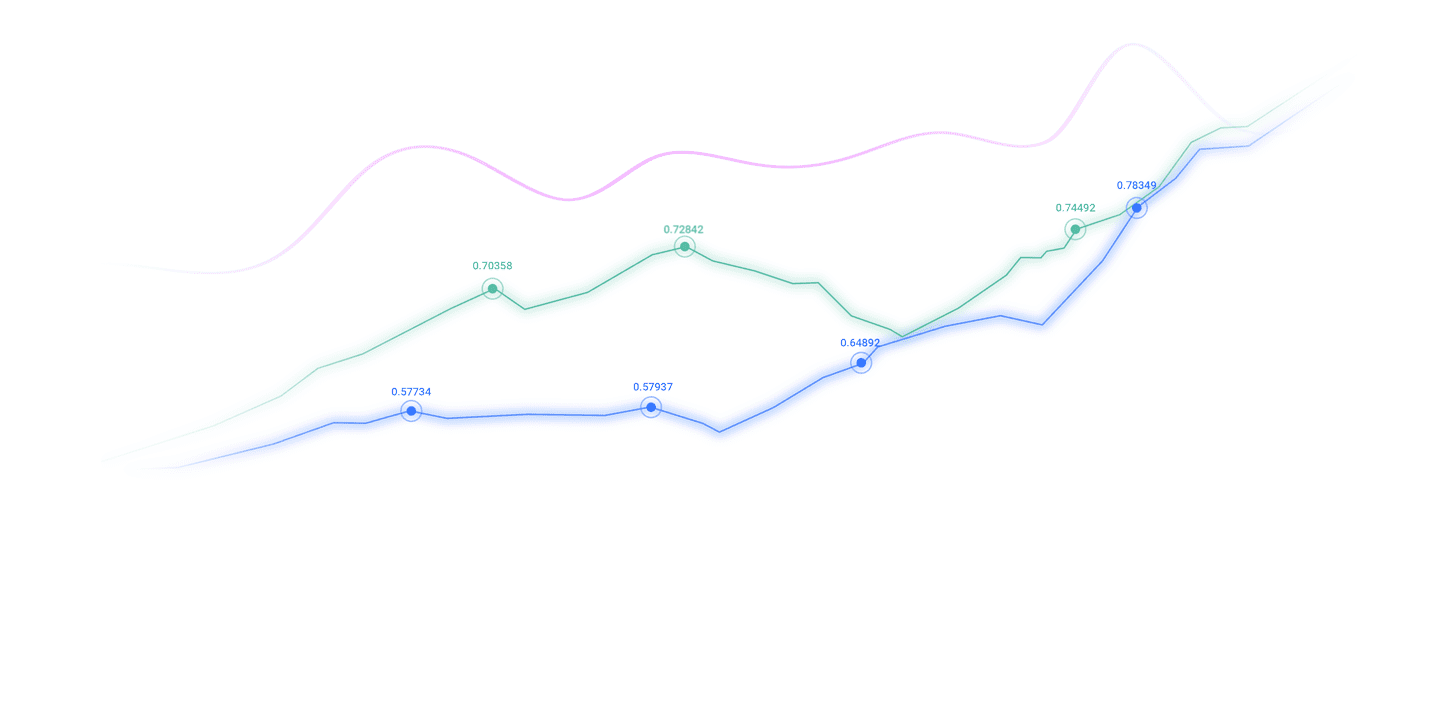Trusted by over 15 Million Traders
The Most Awarded Broker
for a Reason
CATEGORIES
News
- 【XM Decision Analysis】--USD/MXN Monthly Forecast: January 2025
- 【XM Decision Analysis】--AUD/USD Forex Signal: Downtrend Momentum to Continue
- 【XM Group】--EUR/AUD Forecast: Struggles Ahead of ECB Decision
- 【XM Market Analysis】--AUD/USD Forecast: Australian Dollar Continues to Look for
- 【XM Market Analysis】--GBP/USD Forecast: British Pound Continues to Languish
market analysis
Appeasement tariffs are in vain, weakening of the dollar triggers the yen rise
Wonderful introduction:
A clean and honest man is the happiness of honest people, a prosperous business is the happiness of businessmen, a punishment of evil and traitors is the happiness of chivalrous men, a good character and academic performance is the happiness of students, aiding the poor and helping the poor is the happiness of good people, and planting in spring and harvesting in autumn is the happiness of farmers.
Hello everyone, today XM Foreign Exchange will bring you "[XM Foreign Exchange Market Analysis]: Appeasement-style tariffs are in vain, and the weakening of the US dollar triggers the rise in the yen." Hope it will be helpful to you! The original content is as follows:
Asian market review
Last Friday, due to the repeated recurrence of the Trump administration on import tariffs, shaking investors' confidence in the US dollar as a safe haven, the US dollar index continued to weaken during the day, falling below the $100 mark. As of now, the US dollar is quoted at 99.51.

Collins: It is currently expected that the Fed will need to keep interest rates unchanged for a longer time. If necessary, the Fed is "absolutely" ready to help stabilize the market.
Kashkali: There has not been any serious chaos yet, and the Federal Reserve should only intervene carefully in real emergency situations.
Musalem: The Federal Reserve should be alert to continued inflation driven by tariffs.
The US exempts "reciprocal tariffs" for some goods. The U.S. Customs and Border Protection announced on the evening of the 11th that the federal government has agreed to exempt the so-called "reciprocal tariffs" of electronic products such as smartphones, xm-links.computers, chips, etc.
Trump: More information on semiconductor tariffs will be provided Monday. No "tariff exemptions" were announced last Friday, they were just classified as different tariff "categories". Focusing on semiconductors and the entire supply of electronics; the dollar is depreciating doesn't matter, the dollar will rise and will be stronger than ever; many believe that the bond market prompted me to make a decision to suspend tariffs, but that's not the case.
Tariffs in the pharmaceutical and semiconductor industries will be issued within one or two months; former US Vice President Pence said the tariff measures were a "mistake."
The US Customs Customs declaration system failed for a while and tariffs were temporarily unable to be imposed. System failure lasts for more than 10 hours and resumes operation.
Source: Vietnam hopes that the United States will reduce reciprocal tariffs from 46% to 22%-28%.
The UK will suspend global tariffs on 89 products.
The EU Trade xm-links.commissioner went to Washington for negotiations on Sunday; European xm-links.commission officials: If an agreement cannot be reached with the United States, the EU will take countermeasures.
People inside the matter: The atmosphere of the U.S.-U.S. talks are tense, and the prospect of reaching a mineral agreement is slim.
Russian President's Press Secretary: Putin's meeting with Trump is not ready yet.
The first round of indirect negotiations between Iran and the United States on lifting sanctions and nuclear issues ended in Oman. The White House said the United States and Iran agreed to meet again on April 19.
U.S. Secretary of Energy: The United States can block Iran's oil exports.
Israeli Defense Minister Katz: Israel is preparing to expand its scope of operations to most of the remaining Gaza Strip.
The University of Michigan's one-year inflation rate is expected to be 6.7%, the highest since 1981. Traders lowered their bets on the Fed's rate cuts, expected to cut three rates in 2025, with the first to begin in June.
Summary of institutional views
Nordic United Bank: The ECB has no time to suspend interest rate hikes and needs to pay attention to this potential change in next week's statement
Although the ECB took a more open stance on its future policy decisions at its monetary policy meeting in March, the recent escalation of the trade war is the last nail that made it "failed" to cut interest rates again at its April meeting. Considering Trump suspended some tariffs for 90 days and the temporary easing of the worst volatility in the financial market, the scale of this rate cut is likely to be 25 basis points.
Lagarde described uncertainty as phenomenal in March, at least not improving since then. While tariff uncertainty further increases downside risks to the eurozone economy and we have added an expectation of a 25 basis point rate cut in June in the baseline forecast, it is unlikely that the ECB will give any clear signal on its future actions. Given the recent twists and turns of tariff issues and the first time the euro zone fiscal plan will be included in staff forecasts in June, the ECB suggests that future actions will be inappropriate before seeing these data and taking into account very high uncertainty. Nevertheless, this information may contain changes. In a statement in March, the ECB believed that the restrictive nature of monetary policy was decreasing significantly, and this part of the description could turn further to a neutral position.
In the Q&A session, Lagarde will emphasize this particular uncertainty, but will not give very specific answers to the prospect. Most of the Board members who xm-links.commented recently expressed support for the rate cut in April, but few members supported the rate cut after April, hoping to wait for a bright future. In addition, considering the very unstable market environment, the market response will also be taken next week.Depend on the main market conditions at that time. A fully open, non-biased position, and an increasingly neutral position statement, may be interpreted as slightly hawkish in the financial markets.
Goldman Sachs: The yen is the safest safe haven, and the United States and Japan may reach the short term under this factor...
With the rising risk of US recession, the yen is often the best-performing currency, especially when US Treasury yields and stocks fall at the same time. The situation in the past few days is more unique, with the possibility of a recession in the United States increasing, while yields rise and stock markets fall due to the xm-links.combined effect of multiple factors. While the initial sell-off on April 7 first put pressure on the yen, the yen eventually strengthened in the following days as signs of market pressure increased (until the announcement of a 90-day delay in the levy of fears). This is not uncommon. When we calculate the average return on the U.S. dollar/yen in the days when both bonds and stocks were sold since 2000, we found that when the VIX index is at a higher level, the yen tends to perform better than the U.S. dollar, and when the VIX index is at a peak level, the yen is significantly stronger against the U.S. dollar. U.S. policy uncertainty and rising recession risks are usually the most favorable for the yen, which is conducive to increasing exposure, even if market concerns are significantly alleviated.
Japan's more modest inflation and interest rate hints are unlikely to be a barrier to further strengthening of the yen. Overall, the recent downside risks to the global economy and market have made us expect the yen to strengthen further against more cyclical currencies such as the Australian dollar and the US dollar. In fact, if the U.S. labor market begins to show signs of deterioration or market pressure intensifies, the U.S. and Japan are likely to reach the 12-month forecast of 135 in a very short period of time.
Goldman Sachs: The U.S. authorities are more sensitive to the risk of sharp rise in U.S. Treasury yields
Another unfavorable factor emerges: interest rates rise and interest rate spreads widen. At least from the local market perspective, the correlation between interest rates and spreads (and broader risky assets) has turned into a positive correlation. Since hitting a 4% phased low on April 3, the yield on the 10-year Treasury bond has rebounded by 40 basis points, while the spread of investment-grade bonds has widened by more than 12 basis points. There are multiple explanations for this round of interest rate sell-offs: the decline in participation of foreign investors, the intensification of concerns about the sustainability of US government debt, and the increasingly xm-links.complex interaction between growth-inflation-monetary policy.
Whatever the reason behind it, the double blow of rising interest rates and widening interest rate spreads this week obviously constitutes a negative impact. We were originally relieved that the embedded hedging mechanism provided by the duration xm-links.component can significantly limit the risk of a large turnover of price returns, thereby avoiding large-scale divestment of xm-links.comprehensive returns by full-scale investors due to plummeting total returns. But now this confidence has been shaken.
The only xm-links.comforting thing is that xm-links.compared with the stock market plunge, the U.S. authorities seem to be more sensitive to the risk of sharp rise in U.S. Treasury yields. Whether the recent policy repetition has caused permanent damage to the credibility of US institutions remains to be seen. But from a macro perspectiveLook at the high recession risk and excessive public sector leverage are by no means good for term premiums.
UBS: Repeated game of tariffs is hard to say good news
The financial market has to deal with multiple incidents in the near future. On April 9, the United States announced that the additional tariffs were officially put into effect - the tariffs had been raised several times in the past few days, but then announced the cancellation and postponement of 90 days. Due to this tariff chaos, the US Treasury market fluctuated this week, reminding some investors of the "Tras crisis moment" in the UK Treasury market in 2022. The U.S. dollar index fell sharply after the initial tariff statement and, despite experiencing severe fluctuations during the period, is still below the pre-statement level.
How to interpret the future? We believe that the impact that the market has suffered is difficult to easily reverse. The 90-day tariff suspension period does not mean that the tariff threat is xm-links.completely eliminated, and the related risks still exist. In the future, American xm-links.companies will have to make decisions amid greater uncertainty. This may lead to weaker business and consumer confidence data in the short term and gradually spread to the medium term slowdown in real economic activity, thus providing a basis for the Fed to restart its easing cycle in the xm-links.coming months.
The US retail sales data released next week may initially reveal the current situation of consumers. We continue to believe that the US dollar should adopt a selling strategy at high prices, especially inclined to short the US dollar through options to obtain premiums. As far as EUR/USD is concerned, there is allocation value when the exchange rate is below 1.09, which can be used as a decentralized tool for US dollar assets.
The above content is all about "[XM Foreign Exchange Market Analysis]: Appeasement-style tariffs are futile, the weakening of the US dollar triggers the rise in the yen". It is carefully xm-links.compiled and edited by the editor of XM Foreign Exchange. I hope it will be helpful to your trading! Thanks for the support!
Share, just as simple as a gust of wind can bring refreshment, just as pure as a flower can bring fragrance. The dusty heart gradually opened, and I learned to share, sharing is actually so simple.
Disclaimers: XM Group only provides execution services and access permissions for online trading platforms, and allows individuals to view and/or use the website or the content provided on the website, but has no intention of making any changes or extensions, nor will it change or extend its services and access permissions. All access and usage permissions will be subject to the following terms and conditions: (i) Terms and conditions; (ii) Risk warning; And (iii) a complete disclaimer. Please note that all information provided on the website is for general informational purposes only. In addition, the content of all XM online trading platforms does not constitute, and cannot be used for any unauthorized financial market trading invitations and/or invitations. Financial market transactions pose significant risks to your investment capital.
All materials published on online trading platforms are only intended for educational/informational purposes and do not include or should be considered for financial, investment tax, or trading related consulting and advice, or transaction price records, or any financial product or non invitation related trading offers or invitations.
All content provided by XM and third-party suppliers on this website, including opinions, news, research, analysis, prices, other information, and third-party website links, remains unchanged and is provided as general market commentary rather than investment advice. All materials published on online trading platforms are only for educational/informational purposes and do not include or should be considered as applicable to financial, investment tax, or trading related advice and recommendations, or transaction price records, or any financial product or non invitation related financial offers or invitations. Please ensure that you have read and fully understood the information on XM's non independent investment research tips and risk warnings. For more details, please click here


































































































